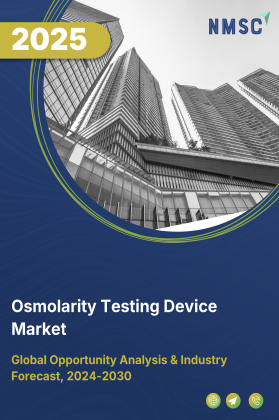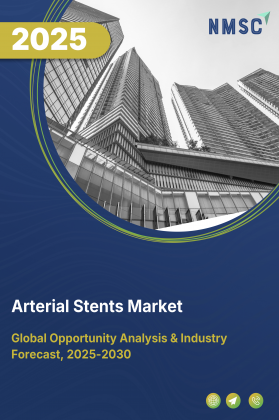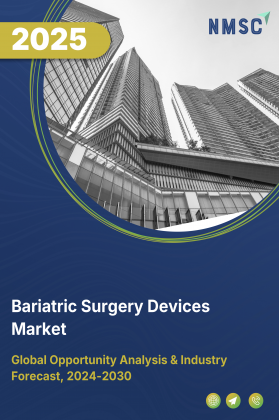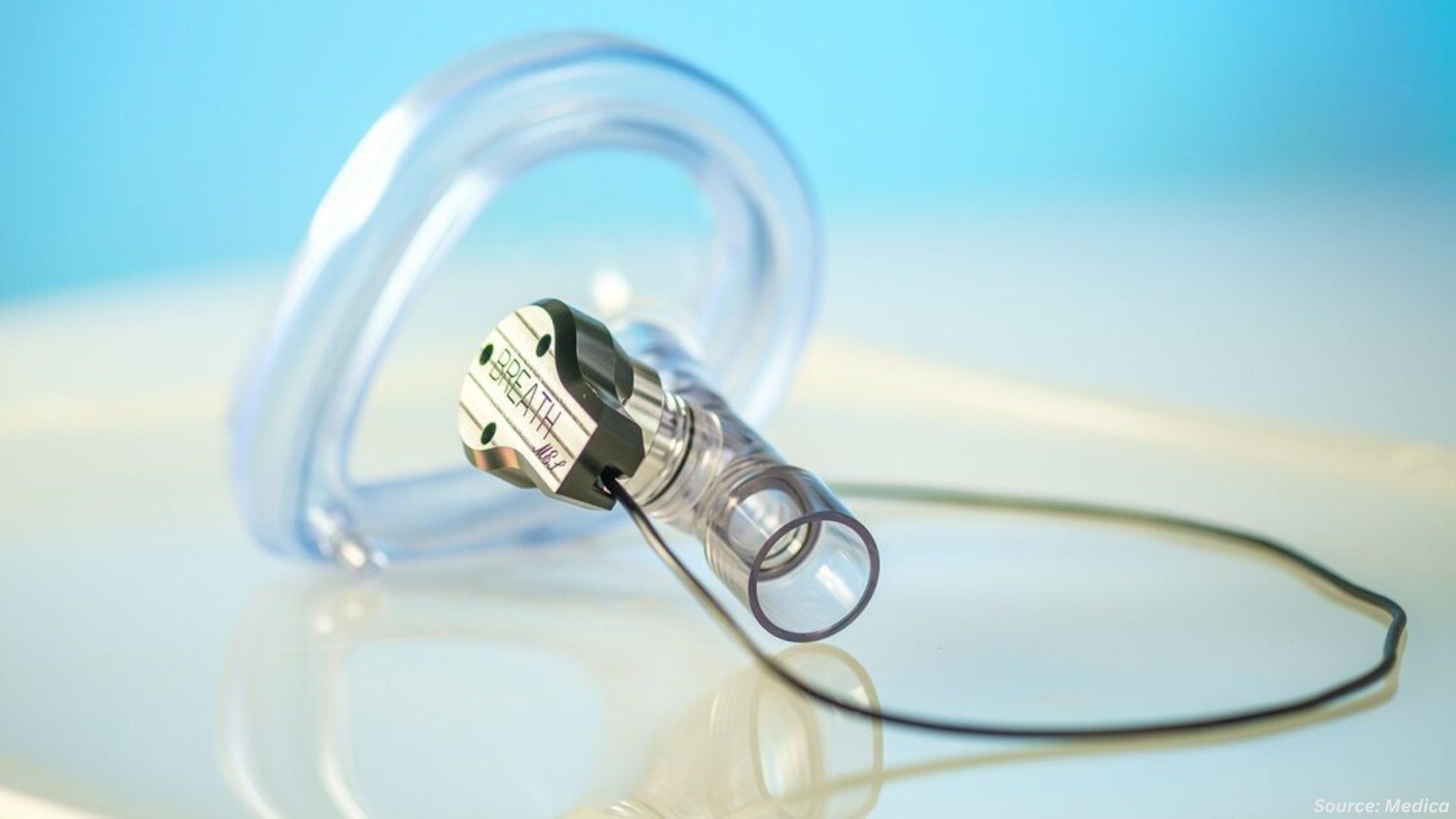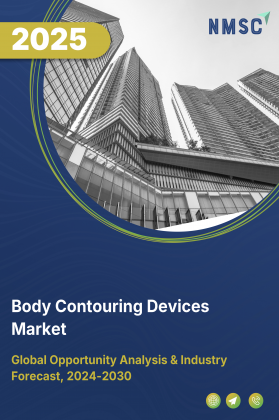
Body Contouring Devices Market by Product Type (Non-Invasive Devices, Minimally Invasive Devices), by Technology (High-Intensity Focused Ultrasound), by Mode of Operation (Standalone Systems), by Price Tier (Premium, Low-Cost Portable, Consumer-Grade At-Home Devices), by Distribution Channel (Direct Sales, Distributor/Wholesaler Network), by Application (Fat Reduction, Skin Tightening), by End User (Hospitals & Surgical Centers)– Global Opportunity Analysis and Industry Forecast, 2025–2030.
Industry Outlook
The global Body Contouring Devices Market size is estimated at USD 2.08 billion in 2024 and is estimated to reach USD 2.42 billion in 2025 and is predicted to reach USD 5.16 billion by 2030 with a CAGR of 16.3% from 2025-2030.
The body contouring devices market is experiencing significant growth driven by rising obesity rates, an expanding aging population, and increasing focus on beauty and wellness. As obesity becomes more prevalent, individuals are turning to non-invasive treatments like laser, radiofrequency, and ultrasound-based devices for effective fat reduction and body shaping without surgery.
Similarly, the aging population is seeking solutions to combat slowed metabolism and maintain body aesthetics. Growing awareness of personal appearance, fitness, and self-care, amplified by social media and wellness trends, further boosts adoption. Despite high treatment costs limiting accessibility in some regions, the market presents opportunities through the increasing preference for minimally invasive procedures, offering safe, convenient, and quick results, particularly among younger, urban consumers. This convergence of health and lifestyle trends is propelling market expansion globally.
Rising Obesity Rates Drives the Market Growth
The increasing prevalence of obesity is a key driver of the body contouring devices market growth. According to World Obesity in 2025, overweight and obesity contribute to 1.6 million premature deaths annually from non-communicable diseases such as diabetes, cancer, heart disease, and stroke, surpassing fatalities from road traffic accidents. This growing health concern has led more individuals to seek non-invasive body contouring treatments, such as laser, radiofrequency, and ultrasound-based devices, which provide effective fat reduction and body shaping without the need for surgery. As obesity rates continue to rise globally, demand for these technologies is expected to grow, boosting market expansion.
Expanding Aging Population Fuels Market Demand
The aging population is a key factor driving the body contouring devices market demand. According to Our World in Data in 2024, the global number of people aged 65 years and older is projected to double over the next thirty years.
As people age, metabolism slows, making it harder to reduce stubborn fat and maintain body shape through diet and exercise alone. This has led more older adults to seek non-invasive and minimally invasive body contouring treatments, such as ultrasound, radiofrequency, and laser-based devices, which offer effective fat reduction and skin tightening with minimal downtime. The rising elderly population is therefore fuelling demand for these procedures, supporting overall market growth.
Rising Beauty and Wellness Trends Boost Market Expansion
Growing awareness of personal appearance, fitness, and overall wellness is a major driver for the body contouring devices market expansion. Consumers are increasingly prioritizing body aesthetics and self-care, seeking treatments that help them achieve a toned and youthful appearance.
Social media, celebrity endorsements, and wellness campaigns have further amplified interest in non-invasive cosmetic procedures. Body contouring devices, including laser, radiofrequency, and ultrasound-based systems, offer safe and effective solutions to meet this demand. As beauty and wellness trends continue to gain traction globally, they are driving higher adoption of body contouring treatments, contributing to market growth.
High Cost of Treatments Limits the Market Growth
One of the key restraints of the market is the high cost of treatments. Non-invasive and minimally invasive procedures, while safer than surgery, involve expensive devices and multiple sessions to achieve desired results. This limits accessibility for a large segment of potential consumers, particularly in price-sensitive regions or among middle- and low-income populations. The high upfront and maintenance costs of this procedure slow adoption, thereby restraining overall market growth.
Growing Demand for Non-Invasive Body Contouring Procedures Unlocks New Growth Opportunities for the Market
One key opportunity in the body contouring devices market lies in the rising adoption of non-invasive and minimally invasive procedures. Consumers are increasingly seeking cosmetic solutions that offer effective results without surgery, long recovery times, or significant risks. Innovations in technologies such as crylipolysis, radiofrequency, laser-based fat reduction, and ultrasound therapy allow providers to offer treatments that are safer, more convenient, and require minimal downtime. This trend opens growth potential for manufacturers and clinics to expand their offerings, particularly among younger, urban populations who prioritize aesthetics and quick results.
Market Segmentations and Scope of the Study
The market report is segmented by product type, technology, mode of operation, price tier, distribution channel, application, end user and region. By product type, it includes non-invasive devices, minimally invasive devices, and others. By technology, the market covers cryolipolysis, high-intensity focused ultrasound, radiofrequency, low-level laser therapy, electromagnetic muscle stimulation, mechanical suction/massage devices, and hybrid multimodal platforms. Applications include fat reduction, skin tightening, cellulite reduction, muscle toning, and comprehensive body reshaping. End users include hospitals, clinics, medical spas, wellness centers, and the home-use market. Regional analysis covers North America, Europe, Asia-Pacific, and the Rest of the World.
Geographical Analysis
In North America, a major driver of the body contouring devices market is the increasing preference for non-invasive and minimally invasive cosmetic treatments. Consumers are seeking effective fat reduction and body-shaping solutions without undergoing surgery, due to shorter recovery times, reduced risk, and improved safety. Technologies such as cryolipolysis, laser, radiofrequency, and ultrasound-based devices are widely adopted, supported by high disposable incomes, advanced healthcare infrastructure, and strong awareness of aesthetic wellness. This trend is particularly pronounced among urban populations and younger demographics, fuelling consistent growth in the North American market.
In Europe, the market is primarily driven by increasing awareness of aesthetic wellness and anti-aging treatments. Consumers are increasingly seeking non-invasive procedures to maintain a youthful appearance, tighten skin, and reduce stubborn fat without surgery. Advanced technologies such as radiofrequency, laser, and ultrasound-based devices are gaining popularity, supported by well-established healthcare infrastructure and high standards of cosmetic care. The influence of beauty trends, wellness campaigns, and rising disposable incomes across Western European countries further encourages adoption, making aesthetic enhancement a key growth driver in the European market.
In the Asia Pacific region, the body contouring devices market is driven by the increasing prevalence of overweight and obesity among adolescents. According to the National Library of Medicine in 2025, India alone has 253 million adolescents, about one-fifth of its population, facing rising risks associated with obesity. This growing health concern is prompting young consumers and their families to seek non-invasive fat reduction and body-shaping treatments, such as cryolipolysis, laser, radiofrequency, and ultrasound-based devices. Coupled with increasing awareness of personal appearance and wellness, this trend is significantly boosting demand for body contouring solutions in the region.
In the rest of the world, the market is being driven by the growth of medical tourism. Countries in Latin America, the Middle East, and Southeast Asia are increasingly attracting international patients seeking affordable yet advanced cosmetic procedures. Non-invasive and minimally invasive body contouring treatments, such as laser, radiofrequency, and ultrasound-based therapies, are particularly popular due to their effectiveness, safety, and shorter recovery times. The combination of cost advantages, improved healthcare infrastructure, and rising awareness of aesthetic wellness is boosting demand and creating significant growth opportunities for the market in these regions.
Strategic Innovations Adopted by Key Players
Key players in the body contouring devices industry are actively advancing their portfolios through innovative product launches and targeted promotional initiatives to strengthen their market position and address evolving consumer demands.
-
In May 2025, InMode introduced IgniteRF in Australia, a sophisticated soft tissue contraction system integrating QuantumRF. Industry experts praised its safety, efficiency, and consistent results, especially for addressing skin laxity after weight loss.
-
In February 2025, InMode Australia unveiled QuantumRF, a next-gen non-suction fractional bipolar RF technology for skin tightening and fat reduction, and the advanced Morpheus8 Burst with Scaleä platform, both reflecting strong momentum in minimally invasive body contouring solutions.
-
In January 2025, Allergan Aesthetics relaunched its annual "CoolMonth" campaign, offering exclusive deals on CoolSculpting® Elite, the leading non-surgical fat reduction technology.
-
In January 2024, BTL Aesthetics launched EXION, a revolutionary 4-in-1 rejuvenation platform designed to address a variety of aesthetic concerns across the face, body, and intimate health. This device employs advanced technologies, including radiofrequency (RF) to deliver effective treatments.
Key Benefits
-
The report provides quantitative analysis and estimations of the body contouring devices market from 2025 to 2030, which assists in identifying the prevailing market opportunities.
-
The study comprises a deep-dive analysis of the current and future body contouring devices market trends to depict prevalent investment pockets in the market.
-
Information related to key drivers, restraints, and opportunities and their impact on the body contouring devices market is provided in the report.
-
Competitive analysis of the key players, along with their market share is provided in the report.
-
SWOT analysis and Porters Five Forces model is elaborated in the study.
-
Value chain analysis in the body contouring devices market study provides a clear picture of roles of stakeholders.
Body Contouring Devices Market Key Segments
By Product Type
-
Non-invasive devices
-
Radiofrequency systems
-
Ultrasound-based systems
-
Cryolipolysis devices
-
Laser-based lipolysis devices
-
Electromagnetic muscle stimulation devices
-
Combination systems
-
-
Minimally invasive devices
-
RF-assisted liposuction devices
-
Laser-assisted liposuction devices
-
Power-assisted liposuction devices
-
-
Invasive surgical platforms
-
Traditional liposuction equipment
-
Tumescent liposuction systems
-
By Technology
-
Cryolipolysis
-
High-intensity focused ultrasound
-
Radiofrequency
-
Low-level laser therapy
-
Electromagnetic muscle stimulation
-
Mechanical suction/massage devices
-
Hybrid multimodal platforms
By Mode of Operation
-
Standalone systems
-
Portable/handheld systems
By Price Tier
-
Premium
-
Mid-range
-
Low-cost portable devices
-
Consumer-grade at-home devices
By Distribution Channel
-
Direct sales
-
Distributor/wholesaler network
-
Online
-
Rental / lease-based models
By Application
-
Fat reduction
-
Abdomen
-
Thighs
-
Flanks/Love handles
-
Arms
-
Submental
-
-
Skin tightening
-
Cellulite reduction
-
Muscle toning & definition
-
Comprehensive body reshaping
By End User
-
Hospitals & surgical centers
-
Dermatology clinics
-
Plastic surgery clinics
-
Medical spas
-
Wellness centers & beauty clinics
-
Home-use / consumer
By Region
-
North America
-
The U.S.
-
Canada
-
Mexico
-
-
Europe
-
The UK
-
Germany
-
France
-
Italy
-
Spain
-
Denmark
-
Netherlands
-
Finland
-
Sweden
-
Norway
-
Russia
-
Rest of Europe
-
-
Asia-Pacific
-
China
-
Japan
-
India
-
South Korea
-
Australia
-
Indonesia
-
Singapore
-
Taiwan
-
Thailand
-
Rest of Asia-Pacific
-
-
RoW
-
Latin America
-
Middle East
-
Africa
-
Key Players
-
Candela Corporation
-
InMode Ltd.
-
Lumenis Ltd.
-
Cynosure LLC (Hologic, Inc.)
-
Solta Medical (Bausch Health)
-
Venus Concept Inc.
-
Alma Lasers (Sisram Medical)
-
Sciton, Inc.
-
EndyMed Medical Ltd.
-
Lutronic Corporation
-
SharpLight Technologies Inc.
-
Lynton Lasers Ltd.
-
Jeisys Medical
Report Scope and Segmentation
|
Parameters |
Details |
|
Market Size in 2025 |
USD 2.42 Billion |
|
Revenue Forecast in 2030 |
USD 5.16 Billion |
|
Growth Rate |
CAGR of 16.3% from 2025 to 2030 |
|
Analysis Period |
2024–2030 |
|
Base Year Considered |
2024 |
|
Forecast Period |
2025–2030 |
|
Market Size Estimation |
Billion (USD) |
|
Growth Factors |
|
|
Countries Covered |
28 |
|
Companies Profiled |
15 |
|
Market Share |
Available for 10 companies |
|
Customization Scope |
Free customization (equivalent up to 80 working hours of analysts) after purchase. Addition or alteration to country, regional, and segment scope. |
|
Pricing and Purchase Options |
Avail customized purchase options to meet your exact research needs. |

















 Speak to Our Analyst
Speak to Our Analyst



